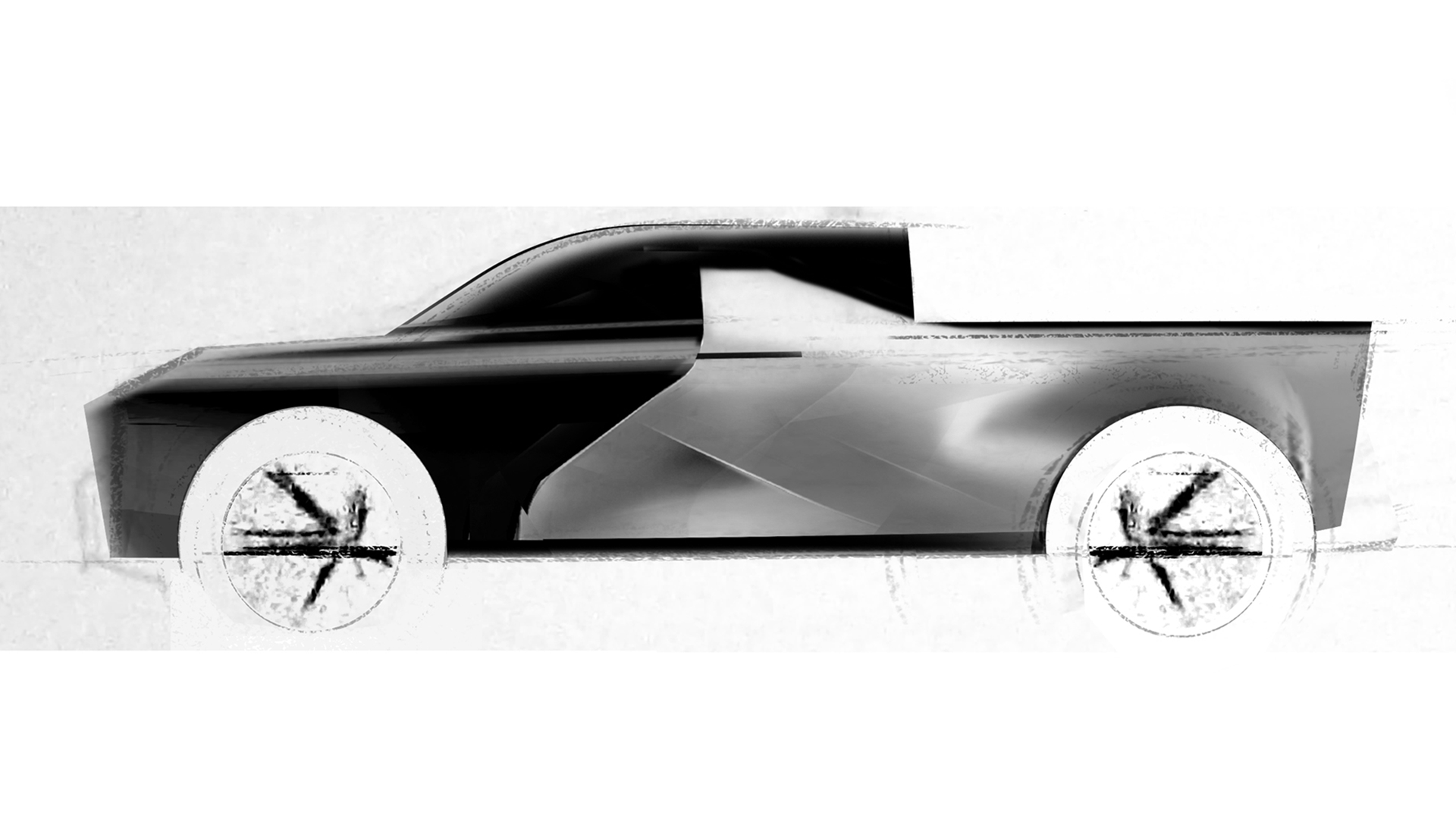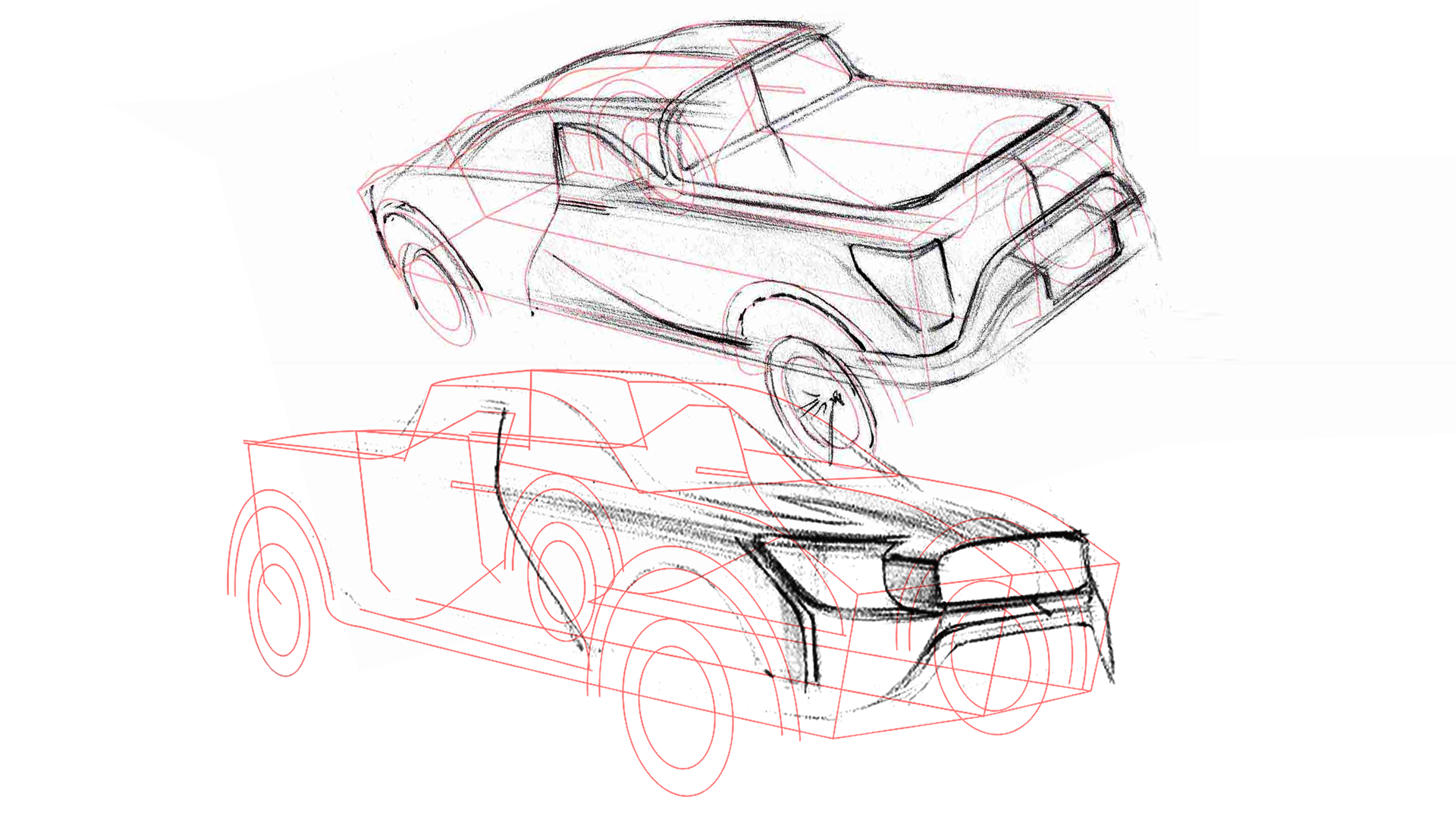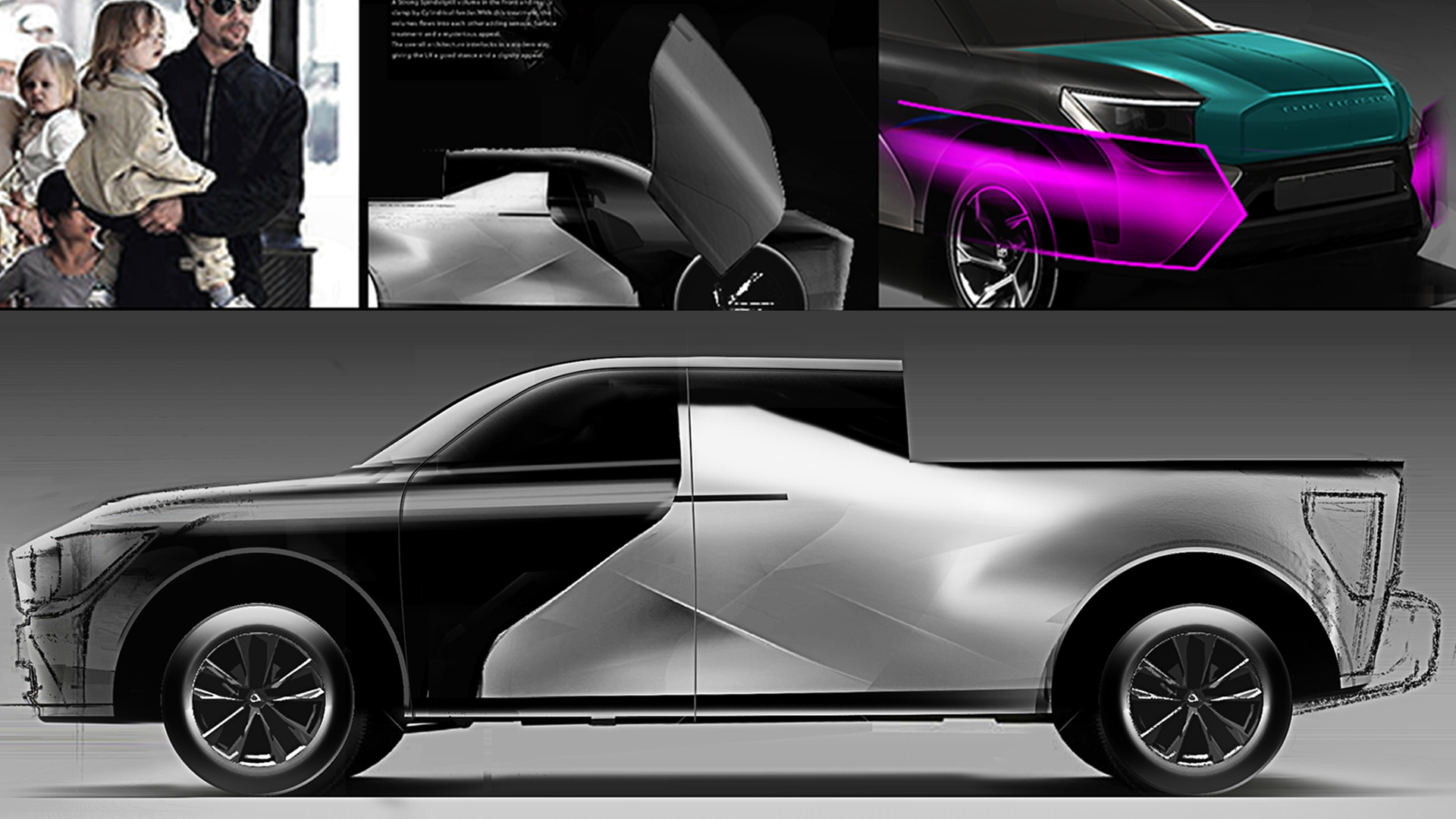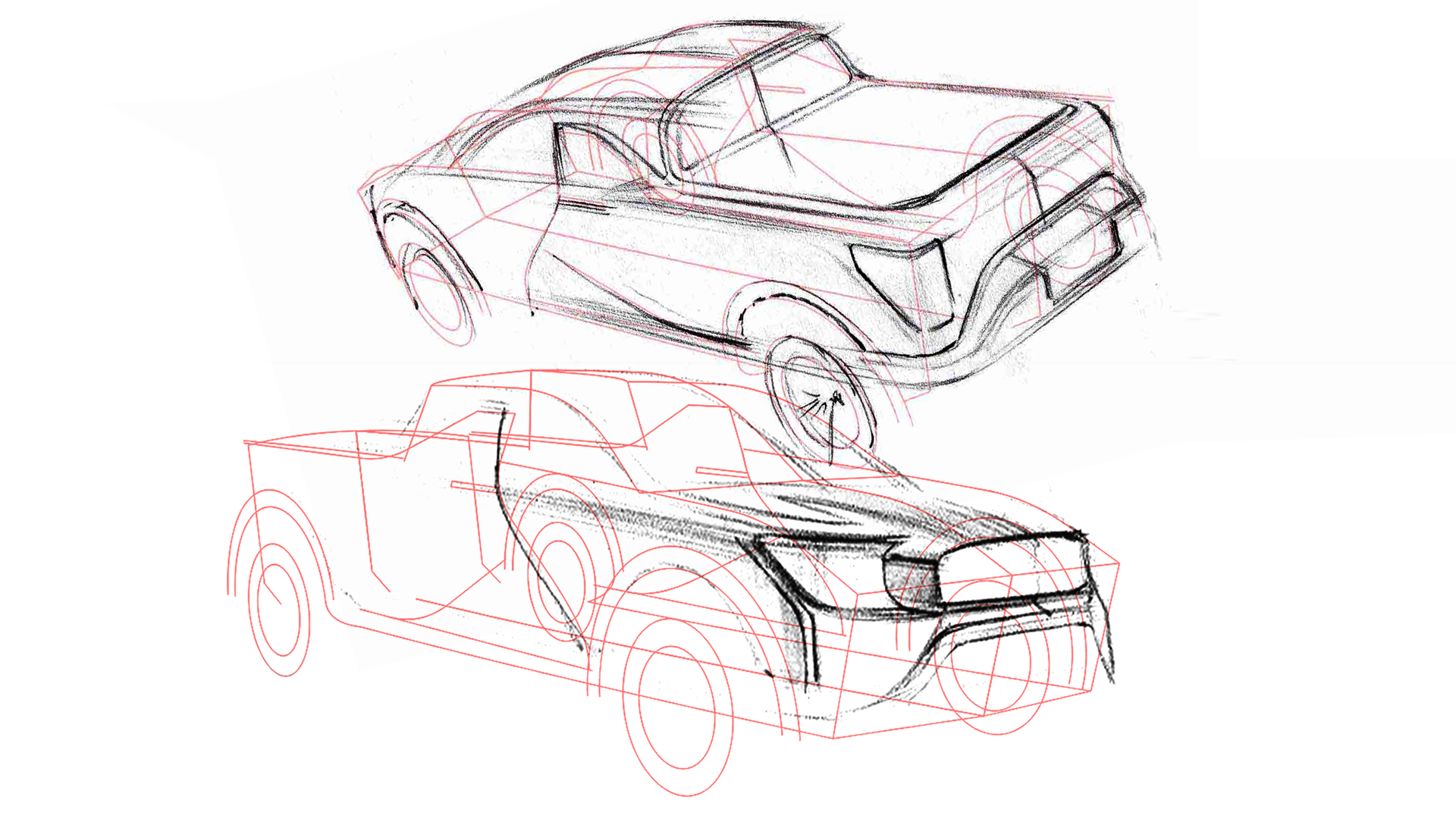In this tutorial, you will learn how to create a complete pickup truck design in 5 days!
As a student, it has always been a great challenge for me to create a design proposal from three different views. Not only must the same idea be presented from three different perspectives, but all three views should also have the same proportions, colors, etc. For me, that has always been very challenging, and it still is today.
In this example project, I want to show you the process of making a complete vehicle proposal in less than one week. You will learn how to make a complete car design proposal that contains three views at a reasonable time. This ability is essential for working in the auto industry, where it is important to deliver qualitative results in a short time.
In this tutorial, I will use a very easy way of CAD: just using lines without creating 3D surfaces. This saves time and can be performed even without much CAD knowledge. This is a special technique, and it is not a rule to be followed, but it should give you an idea of how to speed up our design process. It’s very helpful for beginners as well as professionals.
Now, if you follow the steps below, you can design a full pickup truck proposal in less than one week.

Having a good side view is essential since all further steps will be built on this side view. Before this step, draw some side views and select an idea. This side view is the base and is more important than anything else. When you start a new project, focus only on making the side view. Don’t care about the front and rear ideas yet. Not a single perspective drawing is necessary.
In this step, pay special attention to the right proportion and balance. This can take some time, so don’t rush. Choose a reference to get the overall dimensions right. Just use a real car image from the internet as a base. After correcting the proportion and balance in Photoshop, refine the shapes and paint in some color.

Now that you have a good side view, it is time to go into 3D. Do not generate real 3D surfaces, but instead, focus on a line model. Use a free version of Autodesk Alias, as it is a common program in the automotive industry. Upload your sketch in the software and trace the lines. When retracing the lines in 3D, try to stay as close as possible to the original sketch. Be very accurate and do not change anything.
After you have drawn the lines on a 2D plane, pull them into a 3D space. To get the right dimension for width and certain curvature, it is helpful to use an already existing 3D model as a base. Or if you can’t find a suitable one, just use a blueprint. A good source of free 3D models is Grab.com. It is always good to have templates to guide you.


After you are satisfied with the line model, you can choose three views. You should choose views that describe your design in the best possible way.
Do not over-dramatize your view. Rather, try to take a view that conveys the most information to the viewer.
Take a screenshot and increase the contrast to make the lines more visible. Print them out on real paper and choose a size that makes it comfortable for you to sketch.
Now, you can start drawing an idea for the front and rear of the vehicle. When sketching, do not waste so much time. It is ok when some areas in the sketch remain empty.



Next, it’s time to scan your sketches and load them onto Photoshop. Now the advantage of this technique becomes apparent. You no longer have to worry about proportion, balance, or perspective because all the information is already included in the line model based on the side view from step one. That saves you a lot of time.
You can now invest this time in making a cool rendering. If you are not completely satisfied with your design yet, do not try to change. Try to finish your design and bring it to an end. If you’ve executed the steps correctly, congratulations! You have finished a complete pickup truck design in less than one week!
braunmarco.com

